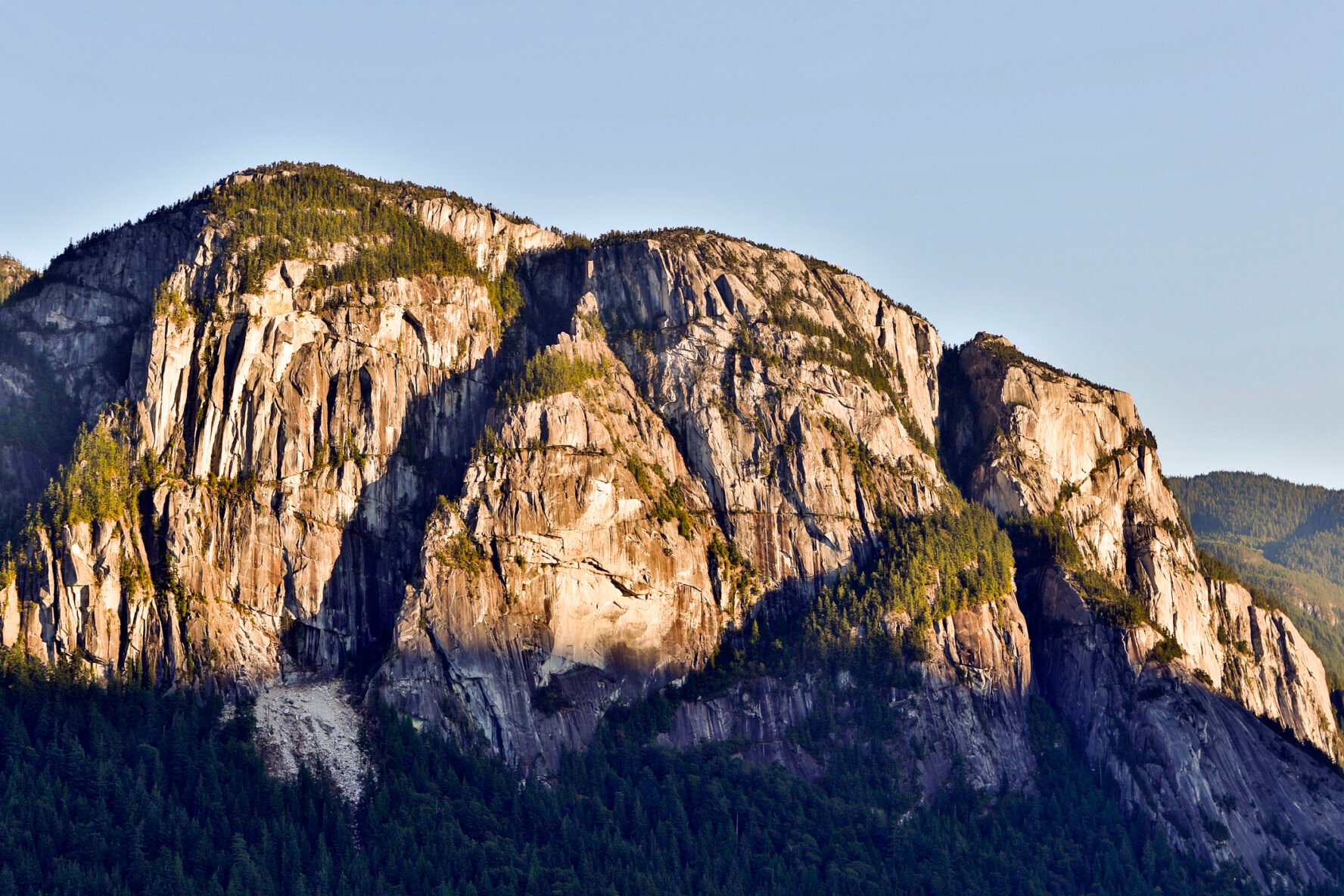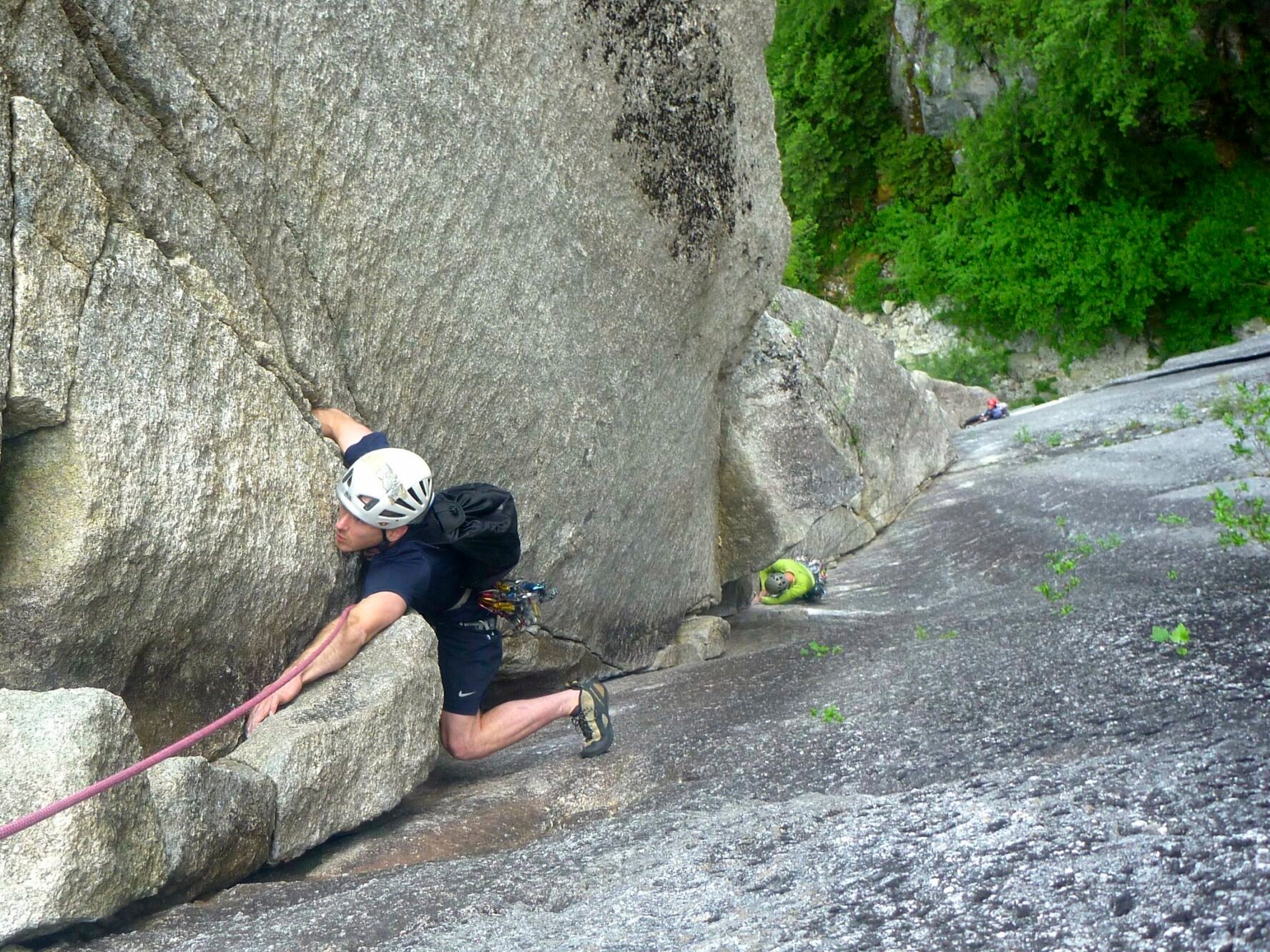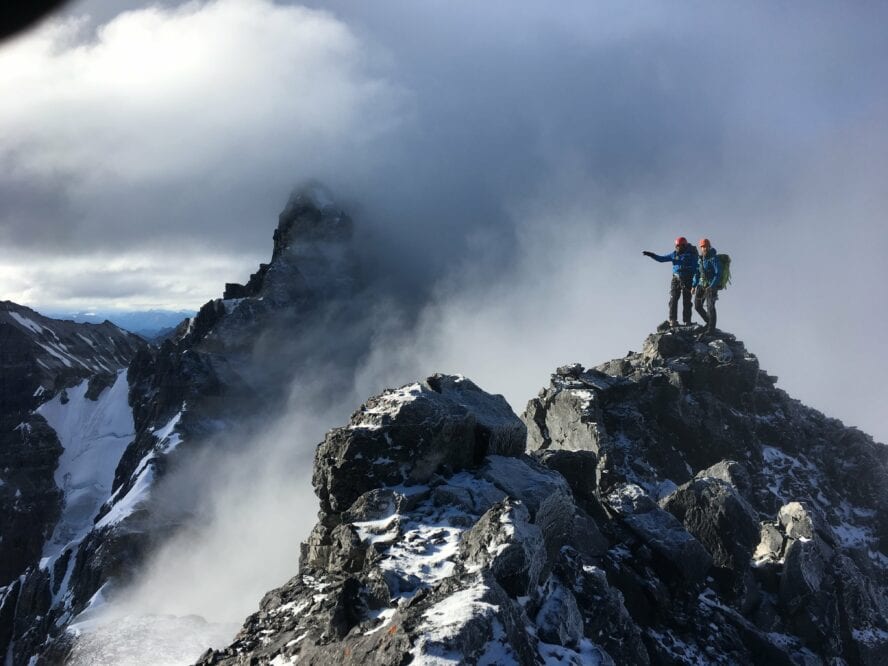Canada is so vast in its size and offerings for rock climbing adventures that it can be daunting to even know where to begin. The best option, in my opinion, is to take a year of your life, live in a van, and explore every single one of them. Barring that idealistic pursuit, I’ll outline what I think are the best options and you can decide which suits you the most. No matter what you’re looking for — big walls, sport routes, epic multi-pitch options, beginner routes and everything in between — Canada is one of the best places to rock climb in the world, for every skill level and style of climber.
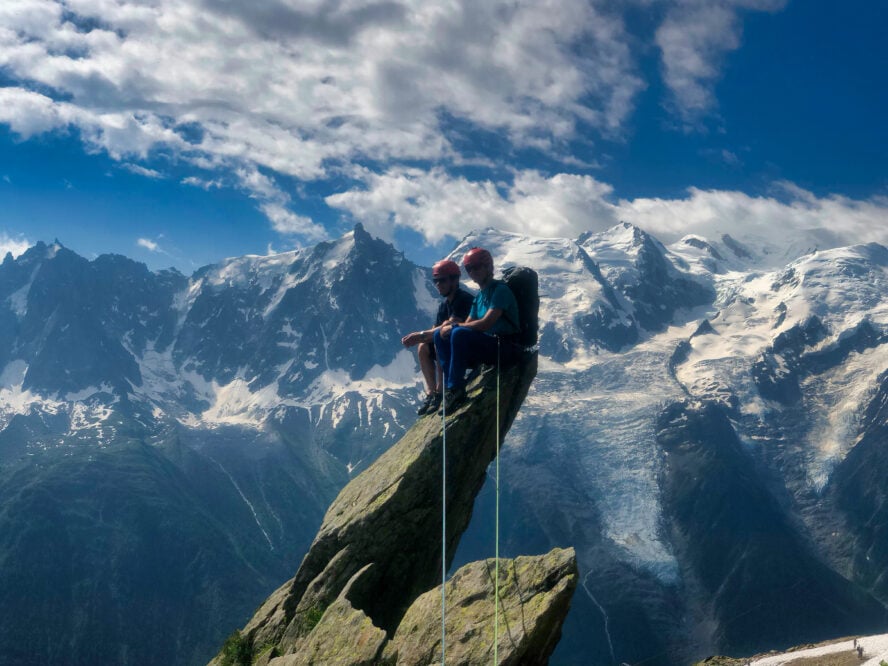
Where to find the best rock climbing in Canada
Contending with the best places for rock climbing in the USA, Canada is a world-class climbing destination due to the quality of the rock and the variety of climbing styles you can sink your hands and feet into. It all depends on what style you really enjoy. For some, Canmore is their top spot because of the variety and objectives that lie everywhere, and maybe trad climbing on granite is not their cup of tea. For others, there is no place like Squamish for honing their skills and bringing them to the spires of the Bugaboos and beyond to Baffin Island.
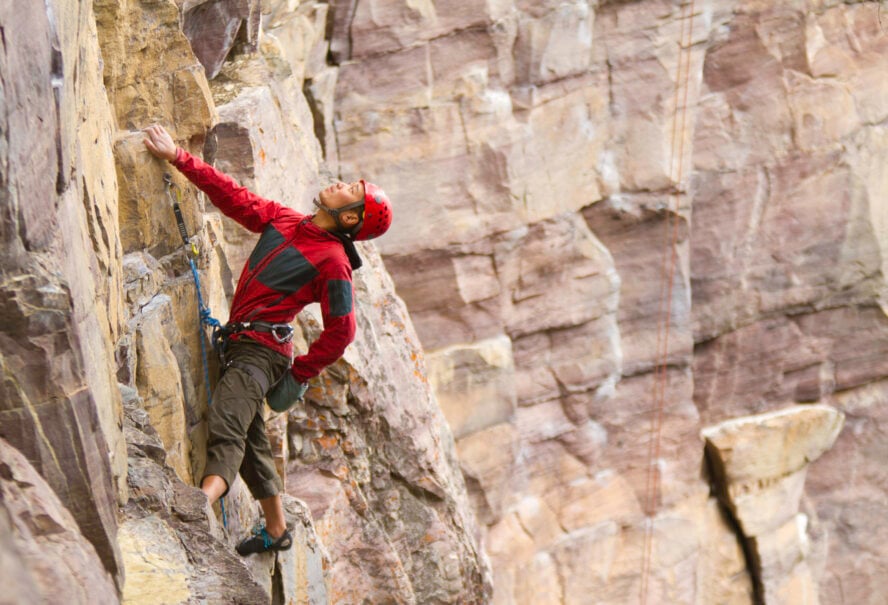
To be honest, I have waffled back and forth between Canmore and Squamish as the top spots. Canmore keeps pushing itself to the top in my mind, yet there is something so special about the ocean and being able to climb above the Pacific waters that makes Squamish more appealing.
To me, climbing has always been interesting because of the different experiences I get every time I climb. I love that no two places are ever alike. I have climbed in most of these places and have had challenging and rewarding experiences in all of them. I encourage you to read on and then go explore the places you haven’t yet seen. After all, the best crag is always the one you’re currently climbing.
1. Squamish
Squamish is a world-class climbing venue and arguably the best place in Canada for climbing. To a climber, hearing the name “Squamish” brings to mind huge granite cliffs hanging steeply above the dark ocean waters of Howe Sound. It has endless traditional multi-pitch climbing on the Chief, a 2000-foot monolith that’s Canada’s answer to Devil’s Tower. Dotted amongst the giant cedars at the base are tonnes of boulders, with endless puzzling problems. If neither trad nor bouldering is your style, there are also lots of steep sport climbs in Cheakamus Canyon, as well as plenty of other crags.
#Vanlife is a little harder than it used to be, but this is the spot to hang in the summer and focus on climbing. When it rains, and it does, there are endless other adventures awaiting. Plentiful ocean adventures like kiteboarding or paddleboarding, and warm lakes to swim in when not climbing on perfect granite. This place is a must visit.

A great testing ground for bigger venues
If you dream of ever going to Yosemite or simply being a great crack climber, this can be your testing grounds. You’ll find the most beginner-friendly single-pitch trad climbs this side of climbing in the Gunks, and then take those skills higher up the bigger faces. Also, Squamish hosts some of the best alpine climbing in the Tantalus Range, so give that a shot while you’re at it.
A few classics that come to mind are Diedre (5.7), Angel’s Crest (5.10b), and the obvious Grand Wall (5.11a, A0).
For overall appeal, Squamish has the best climbing you’ll find north of the 49th Parallel.
Squamish - Good to Know
Fly into Vancouver and rent a car; Squamish is an hour away.
All climbing levels
Squamish Rock Climbs by Kevin McLane and Andrew Boyd
May-October
Alpine Select by Kevin MacLane
Squamish Bouldering 3rd Edition by Marc Bourdon
Backcountry Brewing and Howe Sound Brewery are worth a visit after a good day of climbing.
2. Canmore
If you close your eyes and imagine the perfect climbing area, something with steep, hard limestone climbs, long multi-pitch alpine walls, endless cliffs to stare at and dream, Canmore is what you’re picturing. It is the epicenter for hard sport, ice and alpine climbers in Canada (even the Alpine Club of Canada’s headquarters are in Canmore). At their doorstep, lie 10,000-foot mountains, with thousand-foot steep cliffs everywhere, some chossy and some not. The guidebooks are a testament to the endless pitches, steep and dry, long and technical, run out and wild. If you want to climb the Canadian Rockies, Canmore has it all.

Endless climbing options in Canmore and the surrounding area
In my mind, all the climbing between Lake Louise and Canmore can be lumped into the same area, since it all resides within Banff National Park. Staying in Canmore, you can get up early and be climbing on the incredible Grand Sentinel, or jamming on the newly bolted Apollo route on Mt. Hector, or even climbing the super steep sport routes at Bataan.
Classics are plentiful, like Eeyore’s Tail (5.8, 10 pitches), or the East Ridge of Mount Temple (5.7), an alpine classic, and the hard 5.14, 15-pitch bolted route, The Shining on Mount Lewis, with the hard line up the Diamond Face. Truly, there are too many classics to even list. If you’re planning a guided rock climbing tour in the Canadian Rockies, give Canmore a go.
If you close your eyes and imagine the perfect climbing area… Canmore is what you’re picturing.
Canmore - Good to Know
Fly into Calgary and rent a car; Canmore is one hour and 20 minutes away
Vertical Addiction at 1300 Railway Ave
All climbing levels
Rock Climbs of Mt. Yamnuska by Andy Genereaux
June-October
Rockies Central Guide by David P. Jones
The brew at Beamer’s Coffee Bar makes you feel like you’re rock climbing in Washington
The Grizzly Paw pub for a microbrew experience
3. Bugaboos
Somehow it took me over 20 years as a climber to finally visit the Bugaboos, and it blew me away. Its remoteness adds so much value to the summits. Near Golden, BC, it’s a 50km drive up a dirt logging road, which can be navigated by a two-wheel drive car, albeit slowly. Then, a three-hour hike up an incredible trail, surrounded by tumbling glacier seracs and incredible scenery. The campground is perched on the edge of the world and is a social scene worth embracing.

The Patagonia of Canada
Located in BC’s Purcell Mountains, the Bugaboos are the Patagonia of Canada, with high quality multi-pitch alpine climbs of all ranges. Everywhere you look, there’s an obvious line to the summit of one of the many spires in the area. Access to most routes involves glacier travel, so extensive knowledge is a must. On easy, classic climbs, there can be many people, so be watchful of everyone around you, as they may be your biggest hazard. My last visit there someone dislodged a rock on a snow slope and it tumbled towards me, barely missing my head as I dove out of its way.
Start small in the Bugaboos
Alpine grades are typically worth approaching with less confidence, and I advise climbing well below your regular grades, at least at first. Being humble and starting up some of the easier classics will help you learn the character of the Bugaboos. The 5.4 to the Pigeon Spire summit is an incredible day — a perfect introduction to alpine climbing in the Canadian Rockies or a nice rest day.
I would plan on staying at least a week, if not more. My fingers were ruined after two days of climbing, so be prepared to take days off. It’s quite far to go back and re-supply, so plan well before venturing in. I promise, once you visit, you’ll want to go back again and again… and again.
As with most top BC climbing locations, the Bugaboos classics are endless: Snowpatch (5.8), Becky Chouinard (5.10), East Ridge of Bugaboo Spire (5.7), Surf’s Up, Sunshine Crack (5.11), and the list goes on.
What do you get when you combine Yosemite’s rock quality with glacier features? The Bugaboos — an alpine paradise with some of the best crack climbing in North America.
Bugaboos - Good to Know
Fly into Calgary and rent a car — a high clearance car if possible
Alpine climbs for all skill levels
Late June to September
The Bugaboos by Chris Atkinson and Marc Piche
Backcountry camping or Conrad Kain Hut can be reserved through the Alpine Club of Canada
4. Skaha Bluffs
When you think of Canada, do you think dry, arid desert? Well, Skaha Bluffs are situated in an interior desert just outside of Penticton, BC; it’s hot and rocky and unlike anywhere else in Canada. There is not a spring that goes by, when I’m out skiing and my friends are climbing in Skaha. Situated in the middle of BC, it’s a top choice for edgy, steep climbing. It’s been many years since I have climbed here, but the memory of positive holds on steep faces will never fade.

Shaka’s climbing season starts early and ends late
There are over 50 crags with moderate routes, lots in the 5.10 to 5.12 range. The rock is gneiss, which gives you the small positive holds, and mostly vertical cliffs. As I mentioned, it is one of the few canadian zones that climbing begins in March and goes well into November. Most people hit it at the start or the end of the season as it gets pretty hot in the summer.
The place to start your season off, Skaha Bluffs’ long pumpy pitches will warm up your forearms, and dial in your footwork. Off days can be enjoyed at the lake or cruising the best wineries in British Columbia. Most camping is pay camping, with my favorite campground being Banbury Green.
Some Skaha Bluffs classics are Plum Line (5.10a), Wings of Desire (5.11c), and Bladerunner (5.12a).
The place to start your season off, Skaha Bluffs’ long pumpy pitches will warm up your forearms, and dial in your footwork.
Skaha Bluffs - Good to Know
Fly into Kelowna and rent a car, Skaha is an hour away.
Skaha Rockclimbs: A User’s Manual by Howie Richardson
All skill levels
Skaha Climbing, First Edition by Marc Bourdon
April-November
Great wineries in every direction
Bad Tattoo Brewing for good beer and food
5. Niagara Escarpment
If you’re looking for climbing in Eastern Canada, the Niagara Escarpment is a pretty perfect place to start. The cliffs are not as massive as out west but this ridge of rock is over 700 km long, and there’s climbing the whole way along it. Tie that in with the deciduous tree forests and the Great Lakes backdrop, and it’s magical. I climbed here in the 90s, and can still remember topping out of a great climb and looking back over the lakes, blown away by the experience.

Rock climbing close to Toronto
The Niagara Escarpment’s proximity to Toronto makes this a weekend climbing trip well worth doing. The rock is limestone and you may get lucky and spot some fossils embedded into your handholds!
The closest spot to Toronto is Rattlesnake Point, an easy to intermediate zone and one of the most popular rock climbing spots in Ontario. If you are looking for harder and more challenging routes, Devil’s Glen and Metcalf Rock are both 2.5 hours north of Toronto.
Due to its length, there is a huge variety of climbing, and it’s all different. Classics include Knob Hill (5.7,) Mainline (5.10a), Laplacian Ballroom (5.11a), and Seamstress (5.12a/b). There is bouldering amongst all these climbs, with a huge variety that will challenge everyone.
The Niagara Escarpment’s proximity to Toronto makes this a weekend climbing trip well worth doing.
Niagara Escarpment - Good to Know
Fly into Toronto and rent a car. The crags are anywhere from 45 minutes to three hours away.
Ontario Climbing Vol 1, The Southern Escarpment by Gus Alexandropoulos and Justin Dwyer (coolest climbing guide cover ever?)
All climbing levels
May to October
6. Val-David
Val-David is the birthplace of rock climbing in Quebec. It has a nice Eastern Canadian feel to it and climbing here on a nice September day while surrounded by the fall colors is an unparalleled experience. About an hour outside Montreal, there is rock climbing to suit every style, from V13 boulder problems, big walls, sport climbs, to 5.14 trad climbs, it has it all. The rock is part of the Canadian Shield and very compact granite.
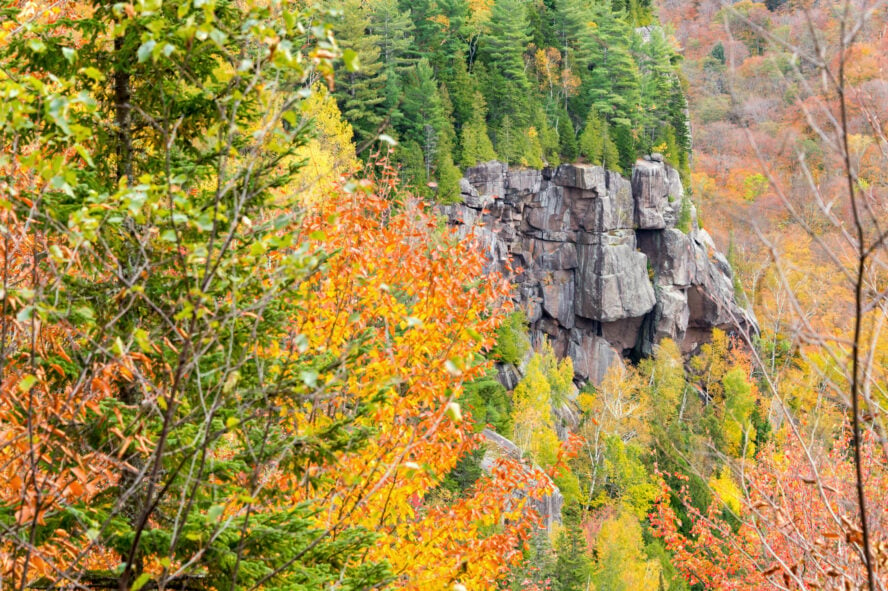
The quaint little villages that surround these cliffs are a tourist’s dream, dotted with small lakes everywhere, it would be easy to rent a cabin on a lake and climb all day. How perfect does that sound?
A few classic climbs include L’amphitheatre (5.8), the Crowne Directe (5.10a), and the mega-classic, Hallucinoreve (5.11c).
Val-David is the birthplace of rock climbing in Quebec, with something for every style of climbing.
Val-David - Good to Know
Fly into Montreal and rent a car; it’s about a one-hour north to Val-David
Guide des Parois Val-David by Paul Laperriere, in French with an English intro
All skill levels
Restaurant L’Épicurieux has a great scene
June-October
7. Baffin Island
Baffin Island climbing is big wall expedition climbing at its best. The rock climbing and variety of objectives is worth the epic adventure, but it’s for experts only. I have yet to go, but I’m constantly dreaming up a reason to visit. Simply getting to the rock walls is a challenge in itself. It involves flying to one of the most remote places in Canada, then flying to an even smaller, more remote one. Then, it’s a decision between either snowmobiling in for 140 km or taking a boat and hiking in for 42 km. Tumbling glaciers, floating icebergs, giant polar bears, and roaring rivers with the wildest canoeing in Canada — is there anything missing to make this a more dramatic adventure?

The images of the mountains up Weasel Valley are mind boggling. Mount Asgard, known as ‘Sivanitirutinguak’ by the Inuit, is Baffin’s most famous, and most beautiful peak, and it commands your full attention. I wouldn’t know where to start in listing off possible objectives, it all depends on ability. As I write this, I am dreaming of getting strong again and heading up here for a month.
Stacked with amazing mountains, the objectives were plentiful and the views always mind-blowing.
By Jon Walsh — alpine climber
Baffin Island - Good to Know
Fly to Iqaluit Airport and then make your way further to the small fishing village of Pangnirtung
Climbing, Trekking & Skiing Baffin Island by Mark Synnott
Experts only
Take this place very seriously and only go with a very strong and competent group
Mid-June to mid-August
Read about this 2017 climb of Mount Asgard on Baffin Island
8. Halifax
I used to climb around Halifax in the 90s; there was Eagle’s Nest and some oceanside bouldering, but there really wasn’t much extensive development. What I did find, was a unique blend of fun bouldering and single-pitch adventures backdropped directly by the Atlantic Ocean. Doing my research now, it seems like there’s been lots of changes in the last 20 years. According to Climb Nova Scotia, there’s well over 500 routes!! It appears lots has changed and it might be worth a re-visit soon.

There is a tranquil beauty and a feeling that time has forgotten Nova Scotia that makes it really special. You might not travel here solely for the climbing, but tying it into a cultural experience would make it worth while.
Classics include See with Joy (5.8), Taming the Shrew (5.10c), the Golden Egg (5.12).
Just outside Halifax, you’ll find a unique blend of fun bouldering and single-pitch adventures backdropped directly by the Atlantic Ocean.
Halifax - Good to Know
Fly into Halifax, Nova Scotia and rent a car.
All levels
Nova Scotia Rock: A Climber’s Guide by Sean P. Cassidy.
March through May is ideal
The Trail Shop in Halifax



